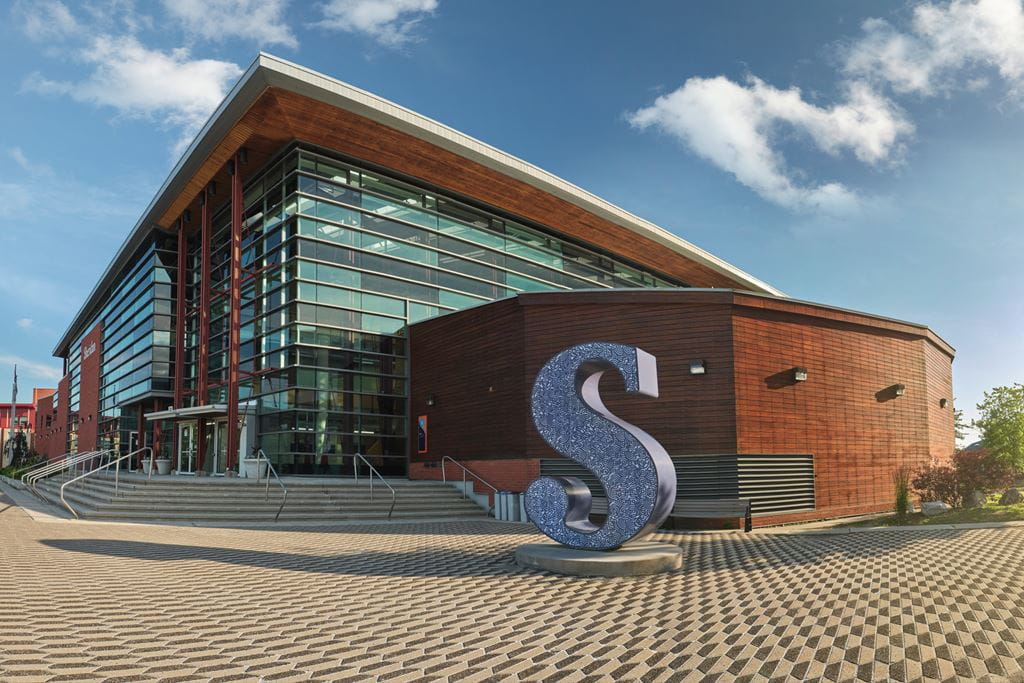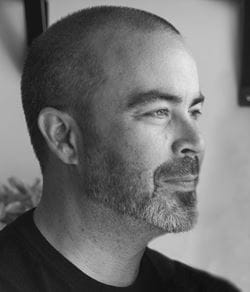
Be good and be fast to succeed, says Emmy winner Michael Beaulieu
 by Vitusha Oberoi – Apr 4, 2024
by Vitusha Oberoi – Apr 4, 2024  For Michael Beaulieu (Animation ’00), 2024 started off magnificently. In January 2024, he received an Annie nomination for Best Character Animation - Live Action for the Disney+ series Ahsoka. It came on the heels of a celebration in December 2023, when he won an Emmy for Outstanding Visual Effects for a Live Action Program for his work on Netflix’s Lost Ollie.
For Michael Beaulieu (Animation ’00), 2024 started off magnificently. In January 2024, he received an Annie nomination for Best Character Animation - Live Action for the Disney+ series Ahsoka. It came on the heels of a celebration in December 2023, when he won an Emmy for Outstanding Visual Effects for a Live Action Program for his work on Netflix’s Lost Ollie.
With a 2022 Visual Effects Society (VES) award for The Witcher, several previous Annie and VES nominations, and stellar contributions to more than 50 productions spanning film, TV, gaming and graphic design to his name, Beaulieu, Animation Supervisor at Industrial Light & Magic, has built a varied, successful career. But he still recalls the time when he thought he wasn’t good enough. In fact, he was about to throw in the towel when a Sheridan professor’s support and encouragement helped him stay the course.
“In college, we all believed that to be one of the best animators you had to be great at life drawing. It was a foundational skill that you just had to have. And I was not a good life drawer,” he recalls.
Struggled with self-doubt but stayed the course with professor’s support
Beaulieu did excel at almost everything but couldn’t improve in life drawing, however hard he tried. Deeply frustrated, he was considering dropping out when his life drawing professor walked him to the display board that showcased some of the best student work.
“He said to me: ‘Look, more than half of the drawings in there are yours. You're doing great in other classes. You're on the right path, so don't give up. Just keep at it … give it your best.’ What he said picked me up in that moment where I was questioning if I was any good at this,” Beaulieu says.
Sheridan alumni his source of inspiration
Beaulieu’s fascination with animation started when, as a high school student, he watched Sheridan Animation graduates discussing how they brought alive the creatures in his favourite films.
“I wasn’t much into academics at school and the only things that interested me were comics and films, specifically films with lots of visual effects. When I watched that CBC documentary, it was as if a light bulb went off in that moment where I was like, ‘That's what I want to do. I want to do animation,’” Beaulieu says.
“I was just living and breathing animation the whole time I was in College. I was focused on learning, but I was always thinking of different ways of doing things. My teachers would lay out the assignment for me, but I would still try to figure out how I could take that even further.”
Beaulieu applied to Sheridan, but he wasn’t successful in his first attempt because, beyond his comic book drawings, he hadn’t had a well-rounded art education. Undeterred, he spent the next year taking art classes and building his portfolio. The second time he applied to Sheridan, he got in and dove headlong into the learning environment.
“I was just living and breathing animation the whole time I was in college. I was focused on learning, but I was always thinking of different ways of doing things. My teachers would lay out the assignment for me, but I would still try to figure out how I could take that even further and do something else on top of it. I was so, so excited and interested in what we were doing that I just wanted to go on to the next thing and keep improving and learning,” he says.
Learning from classmates is important
 Beaulieu says all this time, the support from his own classmates was invaluable. “It was really about everyone wanting to learn from each other. Somebody would do an excellent assignment and then the rest of us would learn from their approach and their techniques. Everyone was feeding off of each other and being supportive,” he says.
Beaulieu says all this time, the support from his own classmates was invaluable. “It was really about everyone wanting to learn from each other. Somebody would do an excellent assignment and then the rest of us would learn from their approach and their techniques. Everyone was feeding off of each other and being supportive,” he says.
Life drawings were just one of the worries Beaulieu had to contend with by the time he reached his third year. It was a time of transition in the industry as computer animation opened the door to new ways to explore his talent. Beaulieu recalls several very skilled character animators in his class during his final year of animation, and he knew he would need to stand out to get noticed by recruiters. He decided to embrace the transition from 2D traditional animation to 3D CGI, and focused on FX animation; specifically, learning to animate fire, water and explosions so he could distinguish himself as he prepared to start his career.
“The best advice I got was that if you want to have a long career in this industry, you need to be good because then your peers and the director will appreciate your work. And you need to be fast so that the production will appreciate you being on the crew because you are going to save money. If you can do those two things, you’ll never have a problem finding a job.”
After graduation, Beaulieu was hired by Core Digital Pictures for a three-month stint that turned into five years. He worked on the film The Wild, where he started as a junior animator. By the time the project was over, he had progressed to being a senior animator.
“It was like being back in school because there were so many experienced people around me,” he says. “During that time, the best advice I got was that if you want to have a long career in this industry, you need to stand out creatively because then your peers and the director will appreciate your work. And you need to be fast so that the production will appreciate you being efficient and saving them money,” he says.
Always reaching for the next level, out of comfort zone
For Beaulieu, every step in his career has been about getting out of his comfort zone and reaching for the next level, even if that made him uncomfortable and insecure. “I’ve always put everything I’ve got into my job. It’s just the kind of artist I am,” he says, recalling his first Annie nomination for The Amazing Spider-Man in 2012.
“I knew this character from all those comic books I read growing up. My favourite artist, Todd McFarlane, made his name from Spider-Man with his style of drawings in the 90s and I wanted to translate that into the work that we were doing on the Amazing Spider-Man, to take McFarlane’s dynamic compositions and put them into what we were doing. Nobody asked me to do this. I was just so excited to animate Spider-Man and develop a new style for him in our film,” Beaulieu says.
The basis of his work culminated in a visual style that based on Spider-Man’s iconic poses, as McFarlane had drawn, but Beaulieu wanted to ensure he flowed into those poses – like shooting his web from his wrist – naturally, based on his actions. “We wanted to avoid having him strike fancy poses for no reason, and we tried to make his movements seem fluid and graceful,” he says.
“Be humble to identify your deficiencies and acknowledge that there are people around you who are better and learn from them. In the end, people want to work with good people.”
After spending so much time on action films like Spider-Man, Transformers, Star Wars The Last Jedi, and Pirates of the Caribbean, Lost Ollie presented another opportunity to try something new. “Most of the stuff I had done until that point was monsters, robots and Spider-Man,” he says. “I wanted to get into a show that was all about emotion and performance and acting. So when Lost Ollie came up, I just couldn’t wait to get in there and start animating.”
Beaulieu says he has learned from his own career that the right attitude, professionalism, and being open to learning are important to success, no matter the production he’s working on. “Starting out as a student, you have to know what you are passionate about, and if you know you are good at something, be humble to identify your deficiencies and acknowledge that there are people around you who are better and then learn from them,” he says. “Talent is important, but in the end, employers and colleagues will want to work with good people. Later in your career you’ll find that it becomes more about the people you want to work with, and those who want to work with you, rather than the project itself.”
Media Contact
For media inquiries, contact Sheridan’s Communications and Public Relations team.
